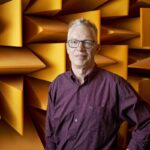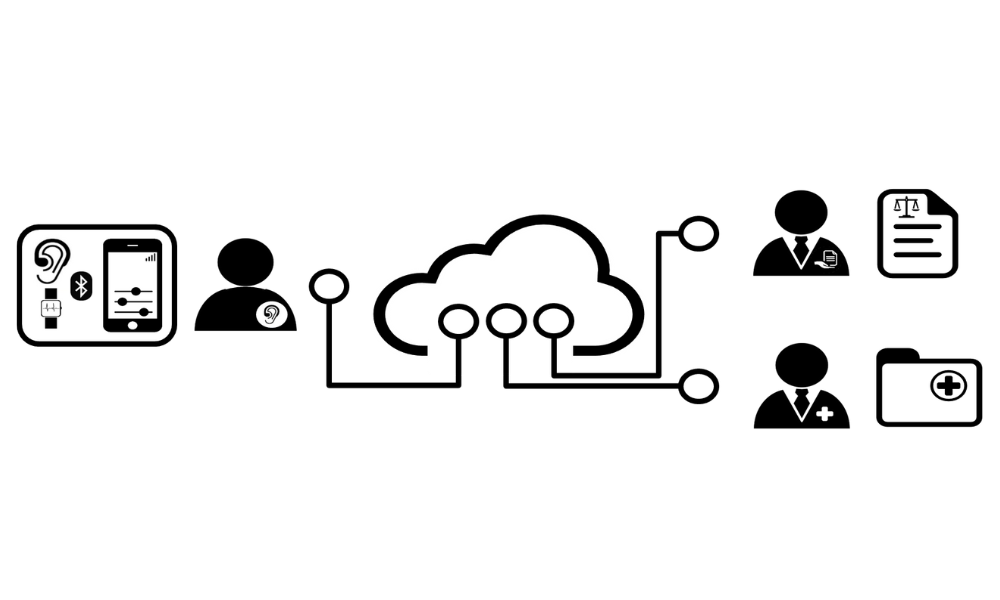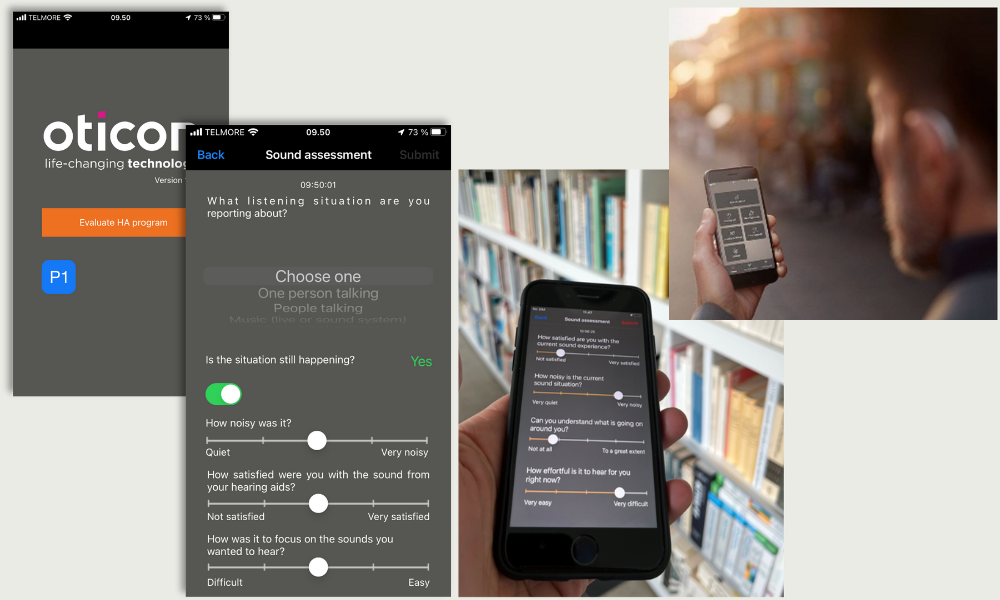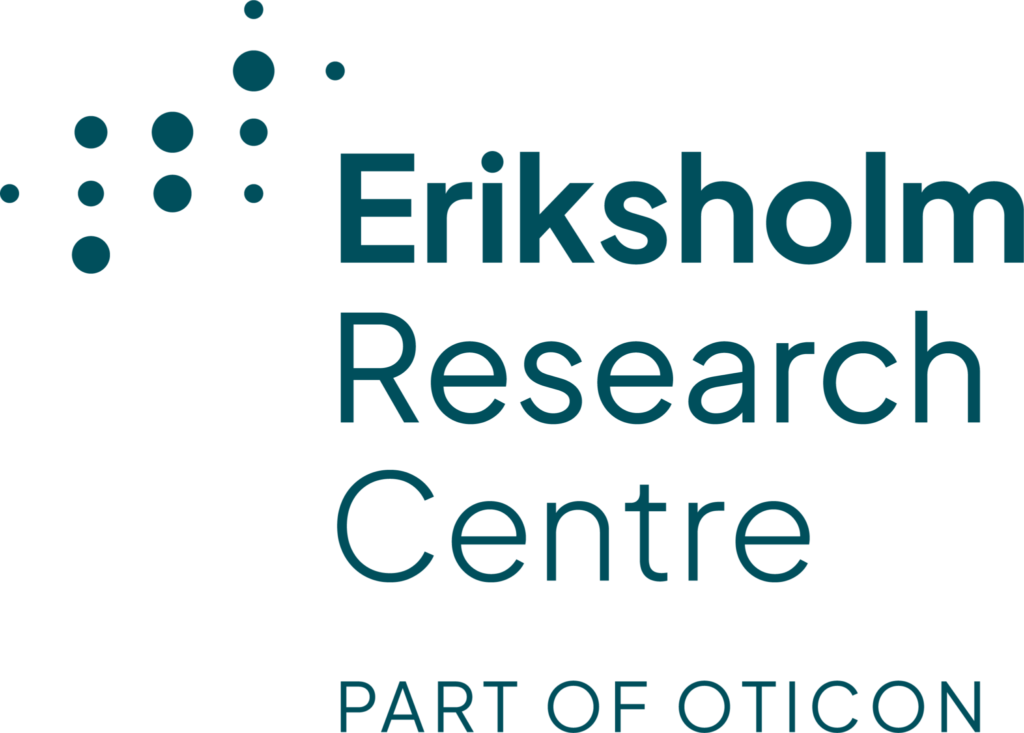Introduction
It is currently not possible to objectively measure and evaluate hearing outcomes in daily life. This is a problem since clinical tests do not necessarily generalize to everyday situations. For example, living with a hearing loss can be both stressful and tiresome due to the additional cognitive resources needed for, e.g., speech comprehension in noisy situations. Such effects are typically not accounted for by standard clinical audiometric evaluations.
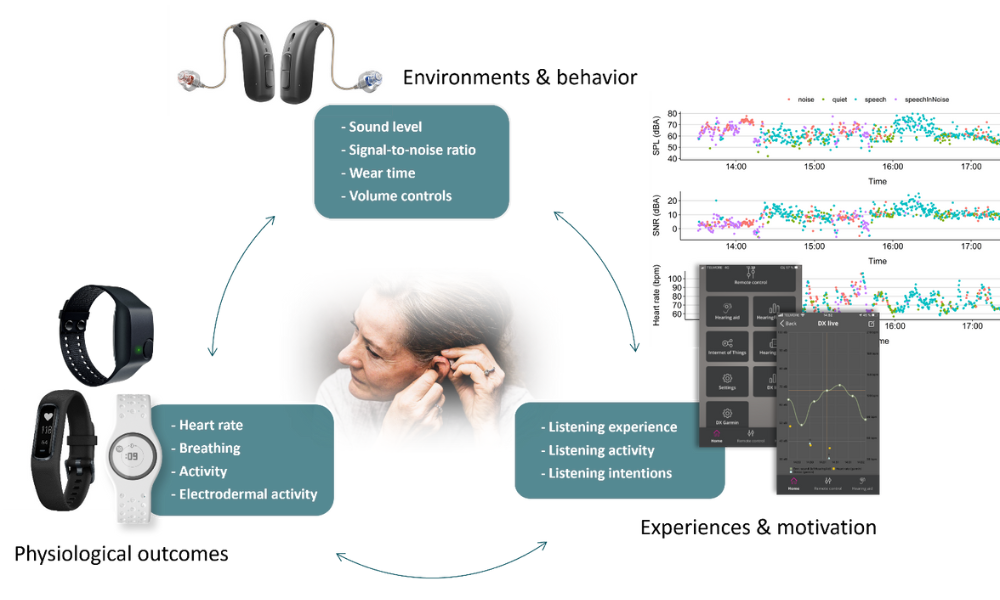
Aims
Methodology
The methodologies we use are strongly inspired by research in animal ecology, which typically rely on observational measures of physiological, environmental, and behavioral signals. We extract information about sound environments and listening conditions from the test participants’ own hearing aids, and we record physiological data and physical activity using wrist-worn wearables (i.e., smart-watches or fitness trackers).
In addition, smartphone-based questionnaires are typically supplied to test participants to acquire subjective data regarding, e.g., their listening experiences and motivations. Due to the complex nature of the data (it is longitudinal and multi-level), we apply advanced statistical modeling and machine learning to make inferences.
The physiological responses to hearing in New York US, in 23 students across a 4-day excursion (unpublished). The events (listed on top) differ in acoustic condition represented by Noise (x-axis), which is calculated as the sound pressure level minus the signal-to-noise ratio in normalised units.
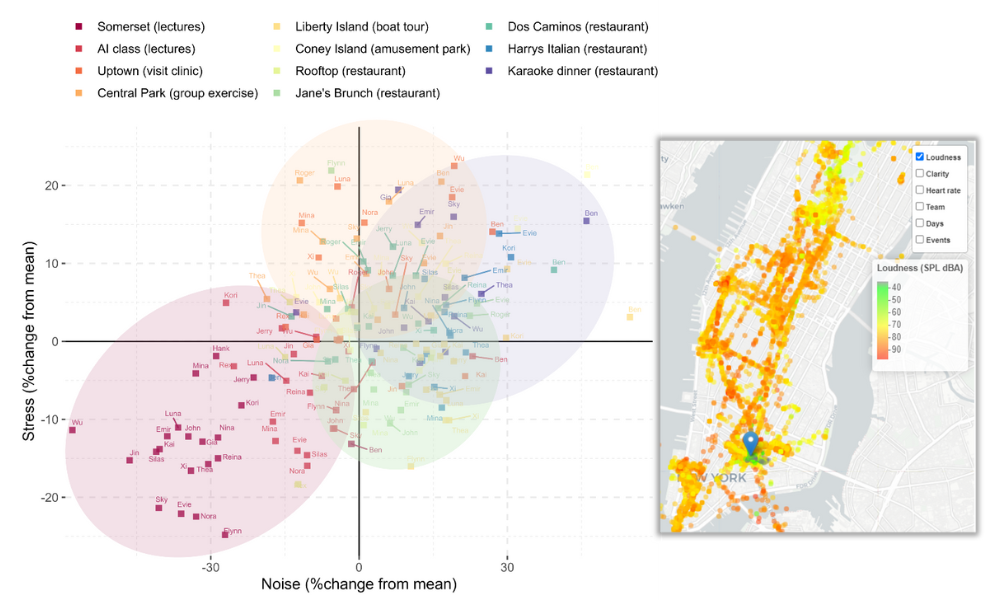
Results
The project has delivered evidence regarding human physiological responses to hearing in the real world. This shows that around 5% of daily heart-rate fluctuations in a group of hearing-aid users are explained by acoustic signals from their environment alone (controlling for physical activity). Namely, higher sound pressure levels are associated with increased heart rate, while higher signal-to-noise ratios are associated with decreased heart rate, specifically in louder (>60 dB SPL) environments. Recent results suggest that these associations are stronger when listening to speech compared to non-specific listening, and that the physiological responses are related to active listening rather than to passive hearing.




